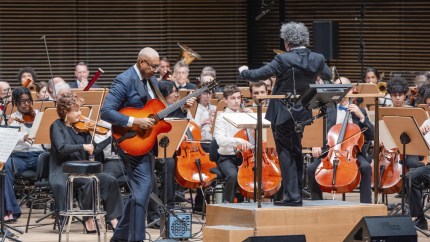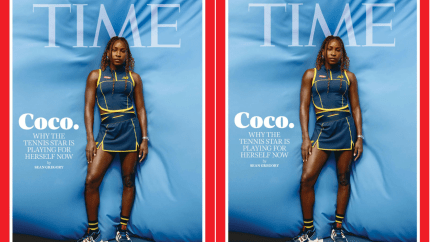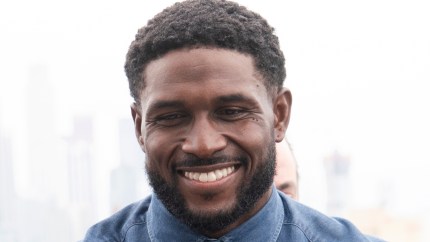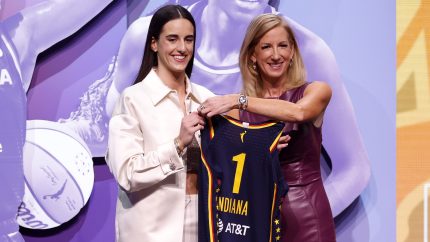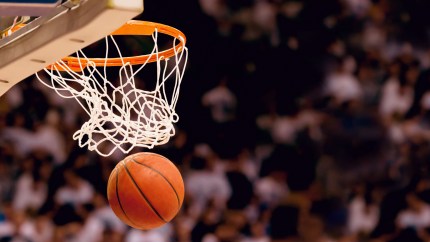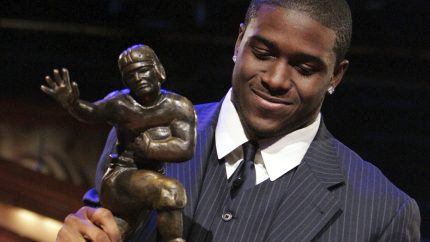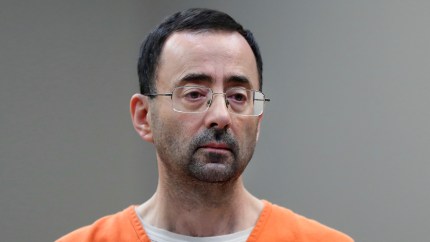Why Naomi Osaka became a symbol of mental health
OPINION: The tennis star became a symbol of mental health, but the story about why that happened is much deeper than you know.
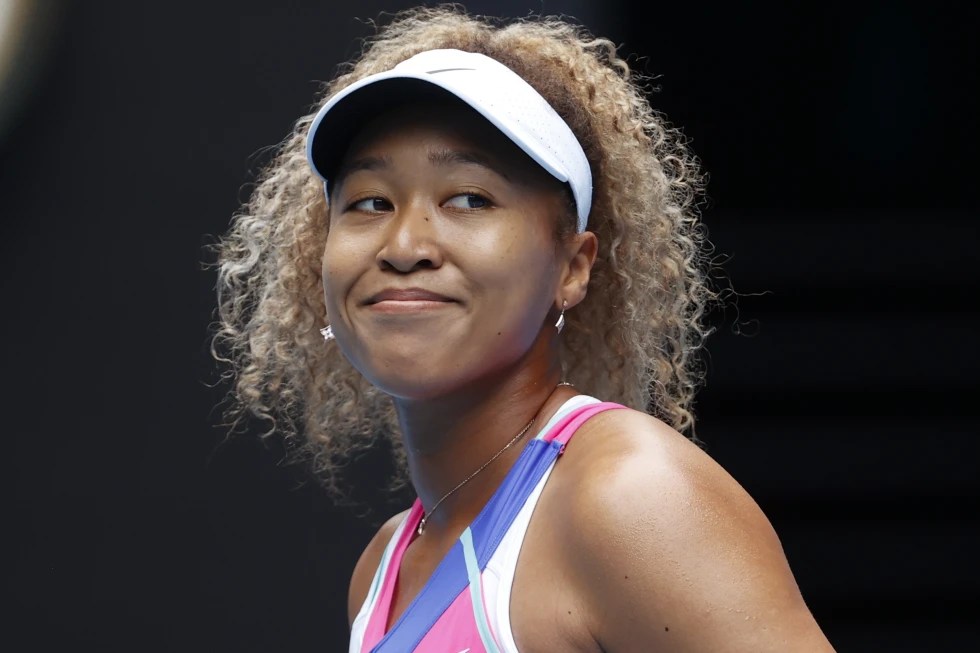
Editor’s note: The following article is an op-ed, and the views expressed are the author’s own. Read more opinions on theGrio.
Before Simone Biles dropped out of the Olympics and became a hero for prioritizing mental health, Naomi Osaka became a hero for the same thing. In 2021, Osaka went to the French Open and declared, via Instagram, that she would not be doing post-match press conferences even though they are mandatory for players, and they get fined for missing them. She said it was too stressful for her because of social anxiety — she wrote on Instagram that she felt “huge waves of anxiety” before doing press conferences, and she had to stop doing them to protect her mental health.
She wrote on her Instagram, “We’re often sat there and asked questions that we’ve been asked multiple times before or asked questions that bring doubt into our minds and I’m just not going to subject myself to people that doubt me.”
It was a stunning moment — the highest-paid female athlete ever and one of the most famous players in pro tennis was refusing to do media because of her mental health. It sparked a lot of conversations and brought a lot of awareness to the importance of mental health. But there’s a larger story around what happened that makes that moment even more powerful. A new biography called “Naomi Osaka: Her Journey to Finding Her Power and Her Voice” by veteran tennis journalist Ben Rothenberg provides a lot of interesting context for what Osaka did and why.
When Osaka announced that she was no longer doing press conferences, it came as a shock to the media folks she’d been talking to in those press conferences because, for a long time, Osaka had been considered one of the best at doing press conferences. Rothenberg takes us back to her first press conference, conducted when she was 16, and we can see why.
Osaka had already been playing professional tournaments for two years but after beating a highly-ranked player at a tournament in California, the media wanted to get to know her so they asked her to come to the media center and talk to them as a group.
A reporter asked, “How does that win rank in your career?”
Sports
She said, “It’s probably the second-best win of my life, probably? First being when I first beat my sister. Because I was like, Yeaaaah, in your face.”
The reporter was like, what? The family win is bigger than this?
Osaka: “You know, it’s like every day I’m like, I beat you!”
You should know that Osaka’s sister Mari, who’s older by two years, grew up alongside Naomi, grinding on the court every day and also trying to make it to the pros. Mari did make it but her highest ranking was 280. When they were in their early teens, Mari dominated all practice matches against Naomi. Then, one day, when Naomi was either 15 or 16 — she can no longer recall which — she started beating Mari in practice. I’d be excited about that, too but this wasn’t trash talk in the car. Naomi was dunking on her older sister in front of the media. It was unexpected, funny and real, and it showed us how comfortable she was in her first press conference. She was making jokes.
Rothenberg writes: “Press conferences rarely prompt reviews, but Naomi received raves, with the gathered press gushing about her on social media.” He recalls that one longtime tennis reporter said, “Naomi Osaka just absolutely slayed her first-ever press conference.”
To understand what really happened there we have to go back to Osaka’s childhood. Rothenberg writes that Osaka did not attend school in person for many years throughout her childhood, which meant that for several years during her youth, she rarely interacted with anyone outside of her parents and her older sister. At a time when most of her peers were refining their social skills, she was cloistered away on a tennis court working all day long. She played her first professional tournament the day she turned 14 so you can imagine how much tennis she had to pack in to be one of the best in the world by that age.
Because Osaka had so little experience with people, she was incredibly shy. A one-on-one interaction was a lot for her. But her press conferences quickly became the stuff of legend. Rothenberg writes, “Naomi was at her most loose and light on the podium … Something about the formal structure of the press conference format, which followed a clear Q&A pattern and had few awkward silences, made Naomi feel safe and secure to share her honest feelings with little inhibition.” Osaka told him, “If I’m talking to someone one-on-one, it just stresses me out. If I tell a room of reporters a joke, 50-50 chance at least three of you are going to laugh, right? If it’s one-on-one, and that person doesn’t laugh, like, I just want to leave.”
So what happened that led from 16-year-old Osaka lighting up for press conferences to 24-year-old Osaka refusing to do them? Several things, but one of the central reasons is that COVID changed the game. During quarantine, reporters were staying home and zooming with players. This meant a lot of new reporters were able to get into a lot of press conferences and Osaka felt like these new people didn’t have the same goals as the dedicated tennis media. She felt like they were trying to get something negative out of her and that led to her becoming hyper-stressed about pressers. It also made her begin to question why she was obligated to do them.
Rothenberg writes about a panel in New York featuring Osaka and the legendary player Billie Jean King. Osaka said she had felt obligated to speak to the media and began asking herself why. “I know it’s to grow the sport,” she said, “but I also feel like at some point talking to us is a privilege and some people abuse that privilege.” King disagreed because it was the media that had given the sport enough attention that it could be highly profitable for players. So, Osaka asked, her earnings make her beholden to the media? She was clearly not feeling beholden.
She ended up going back to doing press conferences but it was tough for her — she cried at her first press conference back.
Years later, Osaka told Rothenberg that she had actually enjoyed doing press conferences and that became part of the problem. “Sometimes I say stuff that I probably shouldn’t say in the pressroom … but it’s because I like journalists.”
For much more on the fascinating life of one of the greatest tennis players of our time, a global phenom whose father is Black, read Ben Rothenberg’s great new biography, “Naomi Osaka.”
Touré is a host and Creative Director at theGrio. He is the host of Masters of the Game on theGrioTV. He is also the host and creator of the docuseries podcast “Being Black: The ’80s” and the animated show “Star Stories with Toure” which you can find at TheGrio.com/starstories. He is also the host of the podcast “Toure Show” and the podcast docuseries “Who Was Prince?” He is the author of eight books including the Prince biography Nothing Compares 2 U and the ebook The Ivy League Counterfeiter.
Never miss a beat: Get our daily stories straight to your inbox with theGrio’s newsletter.
